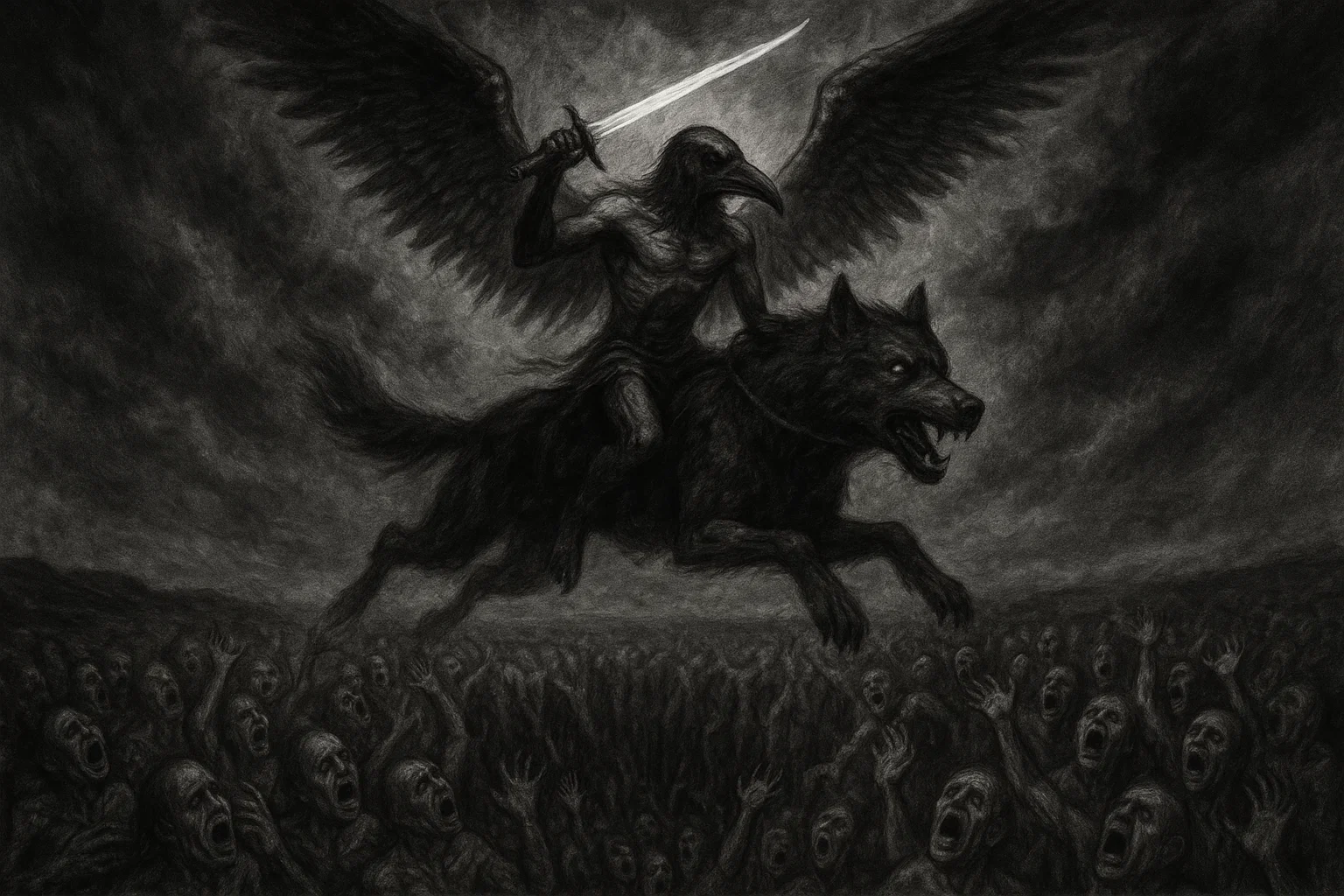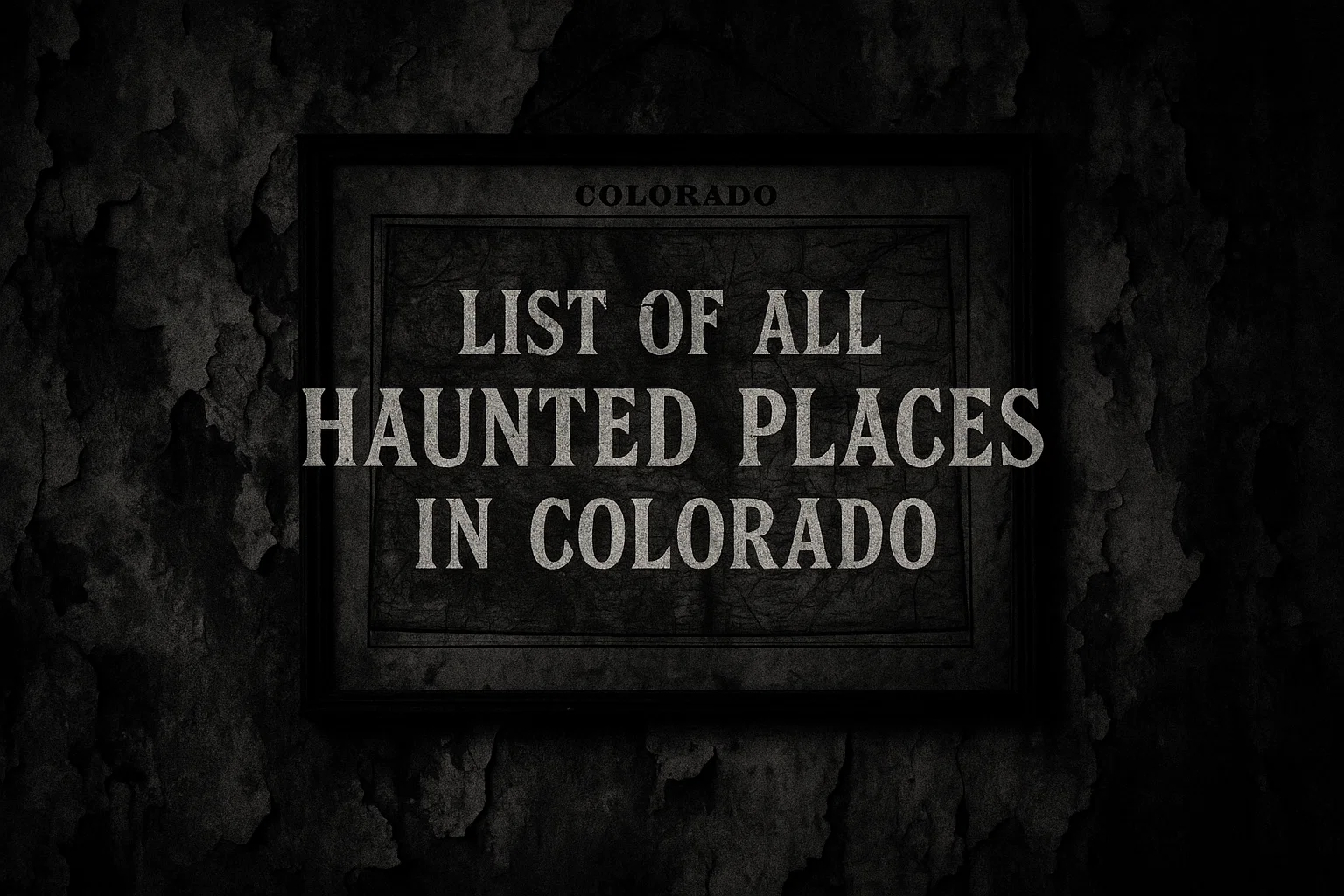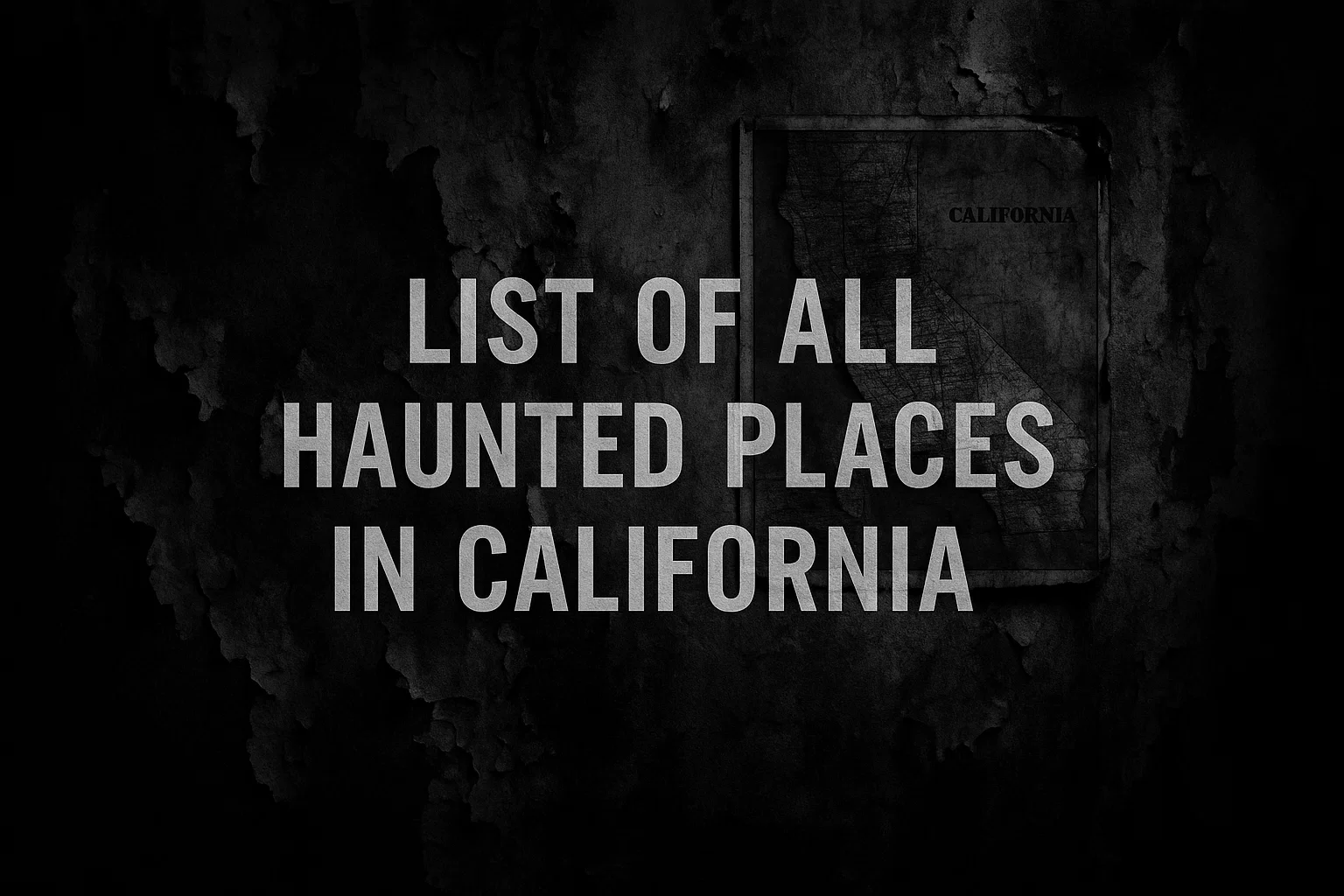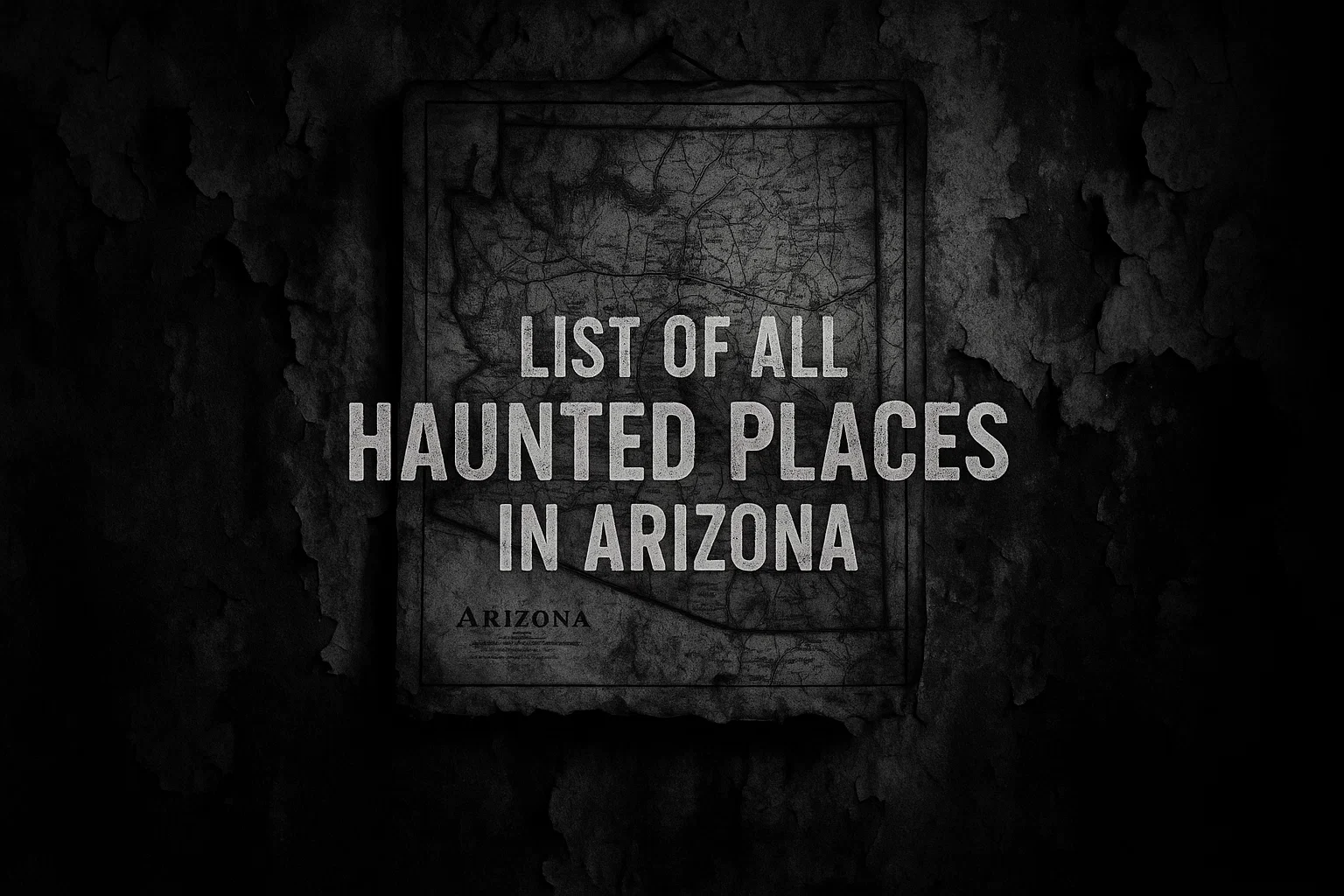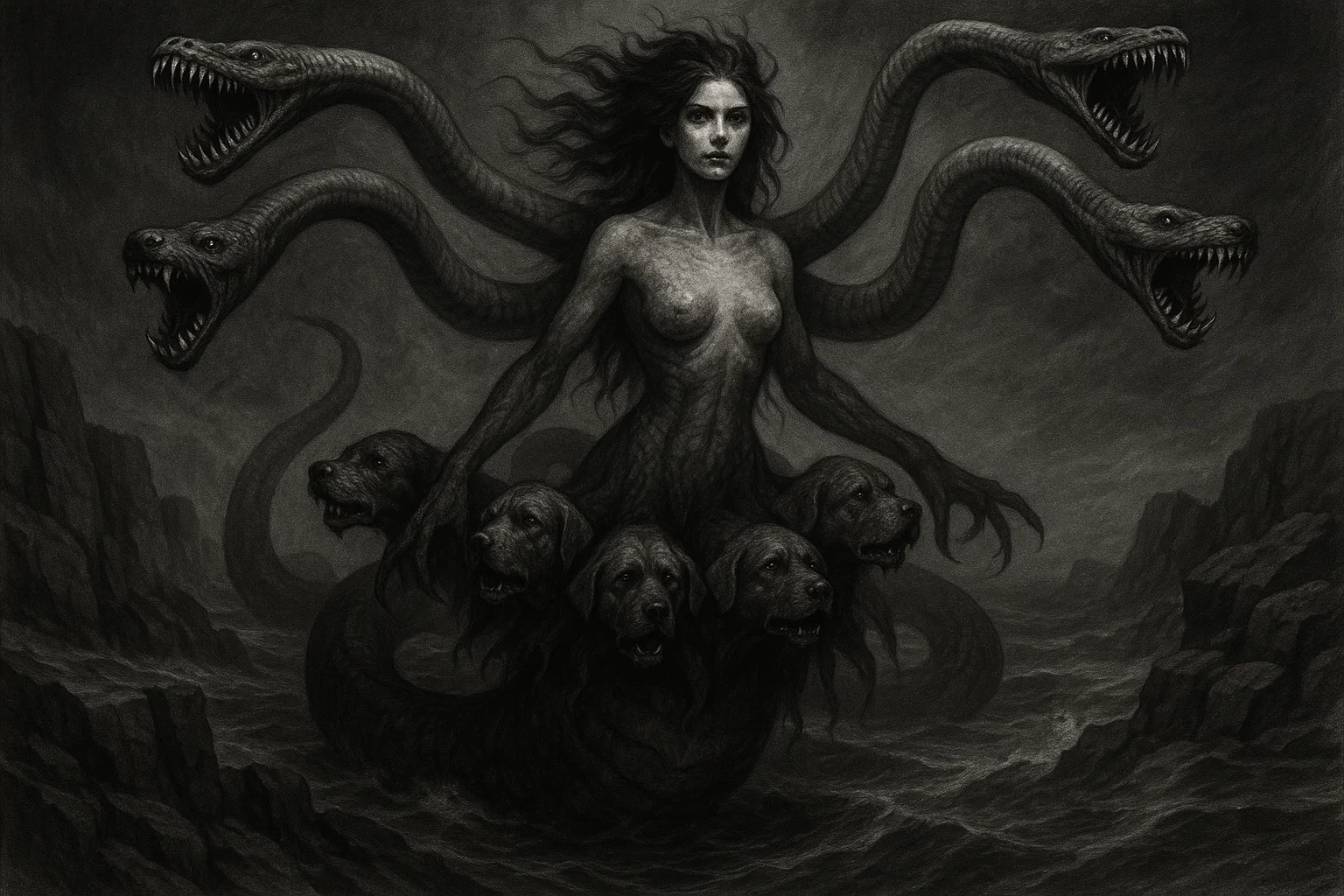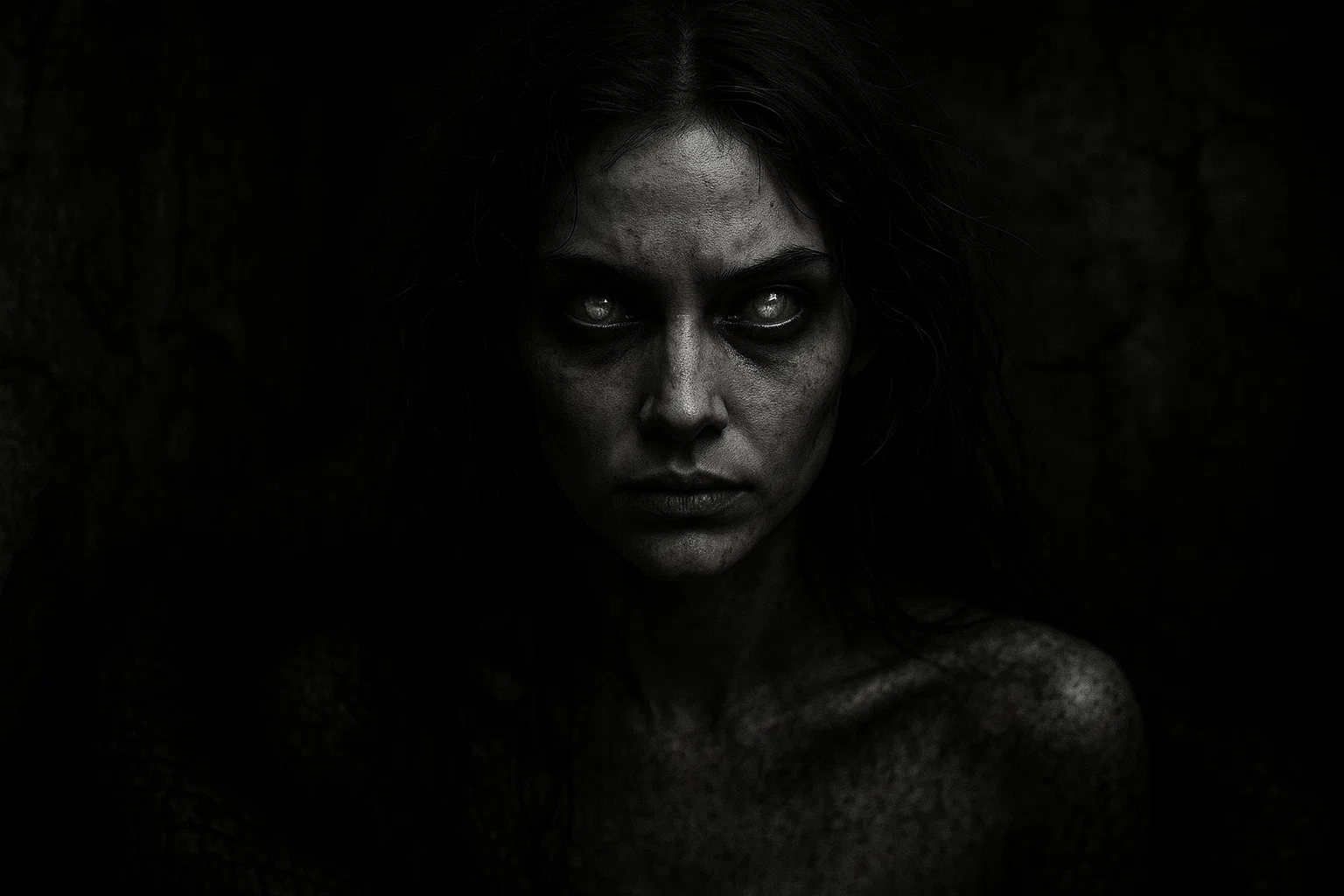What drives a demon to wield chaos as both weapon and art, turning harmony into havoc with a single gesture?
Andras, a shadowy figure in Goetic demonology, is a Great Marquis of Hell whose name whispers of discord and destruction. With a presence that blends celestial grace and predatory menace, this demon challenges the bold to unravel his secrets.
Summary
Key Information
| Attribute | Details |
|---|---|
| Name | Andras (Andra-inanyas) |
| Titles | Great Marquis of Hell |
| Appearance | Winged angel’s body with owl or raven head, riding a black wolf, wielding a sharp sword |
| Pantheon | Goetic Demonology |
| Equipment/Tools | Sharp, bright sword or saber |
| Associated Gem | Obsidian (protection), Garnet (strength) |
| Associated Color | Black (mystery), Red (aggression) |
| Astrological Influence | Scorpio (intensity), Mars (war) |
| Equivalents | Speculative links to Andraste, Andarta, Maahes (unconfirmed) |
| Alignment | Chaotic Evil |
| Opposing Angel/Saint | Anauel / Saint Michael |
| Number of Legions | 30 |
| Superior Demon | Lucifer or Satanachia (speculative) |
| Region of Hell | Not specified |
What Is the Meaning of Andras’ Name?
The name Andras in Goetic demonology carries an air of enigma, with its origins obscured by the mists of occult tradition. Scholars often point to the Greek root “andros,” meaning “man” or “warrior,” as a likely source, reflecting the demon Andras’s martial prowess and his role as a sword-wielding harbinger of strife.
This etymology aligns with his depiction as a formidable figure, flourishing a sharp blade to incite chaos.
Alternatively, some demonologists propose a connection to ancient Celtic deities, such as Andraste, the Iceni goddess of victory invoked by Boudicca during her rebellion against Rome (c. 60 CE), or Andarta, a Gaulish goddess of war and protection.
You May Also Like: 100 Years of Sightings—But What Is Ogopogo Really?
The phonetic resemblance suggests that Andras’s name may have been adapted from these figures, demonized during the Christianization of pagan traditions to cast them as malevolent entities.
The variant Andra-inanyas, noted in some occult texts, may represent a scribal corruption or an attempt to imbue the name with an esoteric, otherworldly tone, possibly derived from a misreading of Latin or Hebrew scripts.
Unlike demons like Amon, tied to Amun-Ra, Andras lacks a definitive mythological precursor, making his name a potential creation of the grimoire tradition.
Some speculate a link to the Latin “andra” (manly, brave), emphasizing his combative nature, or even to Akkadian terms for strength, though the evidence is sparse.
Historical and Mythological Background
The demon Andras emerges from the turbulent landscape of Goetic demonology, a tradition rooted in Christian narratives of fallen angels and infernal hierarchies.
His earliest documented appearance is in Pseudomonarchia Daemonum (1577), authored by Johann Weyer, a Dutch physician and occultist who sought to temper the witch-hunting fervor of 16th-century Europe.
Weyer describes Andras as a great marquis who appears as an angel with a raven’s head, riding a black wolf, and flourishing a sharp sword. He warns that Andras can kill the summoner, their servants, and assistants if not properly controlled, emphasizing his role as an author of discords who commands 30 legions.
This vivid portrayal, penned during the height of the European witch trials (1450–1750), reflects the era’s fascination with demonic forces and their potential to disrupt human affairs.
You May Also Like: Caipora Sightings Across Brazil: Myth, Cryptid, or Forest Ghost?
The Ars Goetia, part of the 17th-century Lesser Key of Solomon and later edited by S.L. MacGregor Mathers and Aleister Crowley in 1904, lists Andras as the 63rd spirit, reinforcing his status as a Great Marquis.
The text details his appearance with slight variations: a winged angel’s body with an owl or raven head, astride a strong black wolf, wielding a sharp, bright sword.
The Ars Goetia underscores his office to sow discord and reiterates the lethal risk to summoners, advising extreme caution.
Jacques Collin de Plancy’s Dictionnaire Infernal (1863) further refines this image, depicting Andras with a wood owl’s head and a saber, noting his ability to teach killing and stir quarrels while commanding 30 legions.
Earlier texts, such as the Liber Officiorum Spirituum (c. 1530–1583), a precursor to Weyer’s work, may reference a similar spirit, though Andras’s specific identity solidifies in later grimoires.
The Book of Abramelin (c. 1450), attributed to Abraham of Worms, does not explicitly name Andras but includes spirits with analogous roles in discord and destruction, suggesting his archetype was part of broader occult traditions.
These texts, spanning the late medieval to early modern periods, reflect a cultural obsession with cataloging demonic entities, often blending Christian theology with remnants of pagan mythologies.
Andras’s mythological origins are less clear than those of demons like Amon or Bael, who trace to specific deities. Some scholars propose speculative connections to ancient war deities due to his martial attributes.
The Celtic goddess Andraste, invoked by Boudicca for victory, shares phonetic and thematic parallels, as does Andarta, a Gaulish deity of strength. These links suggest that Andras’s name and role may have been influenced by demonized pagan figures, a common practice in Christian demonology where deities were recast as malevolent entities.
Alternatively, the Egyptian lion-headed god Maahes, associated with war and protection, offers a thematic parallel to Andras’s predatory imagery, though no direct evidence supports this.
The Greek goddess Athena, with her owl symbolizing wisdom, might also inform his owl-headed form, but her benevolent nature contrasts with Andras’s chaotic evil alignment.
In the Renaissance, Andras’s powers would have been sought by warlords, mercenaries, or political schemers aiming to destabilize rivals or incite conflicts.
His ability to sow discord could disrupt alliances, weaken enemies, or reshape territorial boundaries, making him a strategic asset in an era of constant warfare and intrigue. However, his reputation as a lethal threat, capable of turning against the summoner, made him a last resort, reserved for the most desperate or reckless practitioners.
The Ars Goetia’s warning—“If the Exorcist has not a care, he will slay both him and his fellows”—underscores this peril, cementing Andras’s status as a demon of unbridled destruction.
Andras’s association with Flauros, another demon known for fiery destruction, adds depth to his role.
In some traditions, Flauros is considered Andras’s servant or henchman, suggesting a collaborative dynamic where Flauros amplifies Andras’s chaotic influence.
Historical Mentions
The following table compiles Andras’s appearances in key demonological texts, offering a chronological overview enriched with historical context:
| Text/Grimoire | Year | Description | Notable Details |
|---|---|---|---|
| Liber Officiorum Spirituum | c. 1530–1583 | Possible reference to Andras or a similar marquis spirit linked to discord and killing | Early grimoire predating Weyer’s work; compiled from 15th–16th-century manuscripts; influenced Pseudomonarchia Daemonum |
| Pseudomonarchia Daemonum | 1577 | Great marquis, appears as an angel with a raven’s head, rides a black wolf, carries a sharp sword, sows discord, can kill summoners, commands 30 legions | Authored by Johann Weyer, a Dutch physician; written during witch trial era, reflecting demonological fears |
| Ars Goetia (Lesser Key of Solomon) | c. 1650 | 63rd spirit, Great Marquis, winged angel’s body with owl/raven head, rides a black wolf, wields a sword, sows discord, kills if uncontrolled, governs 30 legions | Compiled from earlier sources; edited by S.L. MacGregor Mathers and Aleister Crowley in 1904; key Renaissance occult text |
| Dictionnaire Infernal | 1863 | Great Marquis, angel’s body with wood owl’s head, rides a black wolf, carries a saber, teaches killing, stirs discord, commands 30 legions | Authored by Jacques Collin de Plancy; 6th edition illustrated by Louis Le Breton, shaping modern visual depictions |
Pseudomonarchia Daemonum (1577, Johann Weyer):
“Andras is a great marquesse, and seemes in an angels shape with a head like a blacke night raven, riding upon a blacke and a verie strong woolfe, flourishing with a sharpe sword in his hand, he can kill the maister, the servant, and all assistants, he is author of discords, and ruleth thirtie legions.”
Ars Goetia (17th century):
“The Sixty-third Spirit is Andras. He is a Great Marquis, appearing in the Form of an Angel with a Head like a Black Night Raven, riding upon a strong Black Wolf, and having a Sharp and Bright Sword flourished aloft in his hand. His Office is to sow Discords. If the Exorcist have not a care, he will slay both him and his fellows. He governeth 30 Legions of Spirits, and this is his Seal.”
Dictionnaire Infernal (1863, Jacques Collin de Plancy):
“Grand marquis aux enfers. On le voit avec le corps d’un ange, la tête d’un chal-huani, à cheval sur un loup noir, et portant à la main un sabre pointu. Il apprend à ceux qu’il favourise, à tuer leurs ennemis, maîtres et sirvitcurs; c’est lui qui élève les discordes et les querelles; il commande trente légions.”
Translation (for context):
“Great marquis in Hell. He appears with an angel’s body, the head of a wood owl, riding a black wolf, and carrying a pointed saber in his hand. He teaches those he favors to kill their enemies, masters, and servants; he is the one who stirs up discord and quarrels; he commands thirty legions.”
What Does the Demon Andras Look Like?
The demon Andras presents a striking and fearsome visage, blending celestial grace with predatory menace.
The Ars Goetia describes him as appearing with a winged angel’s body and the head of an owl or raven, astride a robust black wolf, and flourishing a sharp, bright sword.
The angelic form, with its ethereal wings, hints at his origins as a fallen celestial being, while the owl or raven head symbolizes wisdom, mystery, and nocturnal predation.
The owl, often associated with silent flight and acute senses, underscores Andras’s ability to perceive and exploit human weaknesses, while the raven evokes death and foresight, aligning with his discordant role.
You May Also Like: The Slit-Mouthed Woman | Horror Story
The black wolf, a creature of ferocity and loyalty, serves as a powerful steed, enhancing his martial presence and symbolizing his predatory instincts.
The sword, described as sharp and bright, represents his readiness for conflict and his expertise in teaching lethal skills.
In Dictionnaire Infernal, Andras is depicted with a wood owl’s head, emphasizing his nocturnal and insightful qualities. The wood owl’s silent, predatory nature mirrors Andras’s ability to strike swiftly and decisively.
The saber he carries, a weapon of precision and lethality, contrasts with the broader sword of earlier texts, possibly reflecting cultural shifts in how his martial role was perceived.
This composite image—angelic yet bestial, divine yet destructive—makes Andras a visually compelling figure, embodying the tension between celestial origins and infernal purpose.
Powers and Abilities
The demon Andras wields a formidable array of powers, centered on chaos and destruction, making him one of the most perilous entities in Goetic demonology:
- Sowing Discord: His primary office is to sow discord, inciting strife, quarrels, and wars. This ability to unravel harmony positions Andras as a master of chaos, capable of destabilizing relationships, communities, or entire nations. In historical contexts, warlords or schemers might have invoked Andras to weaken rival factions, leveraging his power to reshape political landscapes.
- Teaching Killing: Andras imparts lethal knowledge, teaching those he favors how to kill enemies, masters, and servants. This expertise in assassination or combat made him a patron for warriors, assassins, or those seeking vengeance, offering strategic skills to eliminate obstacles.
- Lethal Threat: If not meticulously controlled, Andras can slay the summoner and their assistants, a rare and dire warning in Goetic texts. This volatility necessitates extreme precautions, such as consecrated tools or protective wards, to mitigate his wrath.
- Commanding Legions: He governs 30 legions of demons, whose primary directive is to hunt and kill, amplifying his destructive reach. These legions can execute specific tasks, extending Andras’s influence across the infernal and mortal realms.
- Psychological Manipulation: Andras excels at exploiting human anger, infecting individuals with uncontrollable rage to fuel discord. This psychological warfare enhances his ability to sow chaos, manipulating emotions to achieve his aims.
- Strategic Influence: His role in inciting wars suggests a strategic acumen, redefining peoples and continents through prolonged conflict. This power, noted in occult lore, underscores his influence over large-scale societal upheaval.
These abilities distinguish Andras from intellectual demons like Amy (Avnas) or benevolent ones like Vassago, aligning him with chaotic forces like Flauros, his reputed servant. His capacity to infect humans with rage and incite wars highlights his role as a catalyst for unbridled destruction.
Role in the Hierarchy of Hell
As a Great Marquis, Andras commands 30 legions, placing him among the upper echelons of Hell’s feudal hierarchy.
In Goetic tradition, marquises wield martial authority, overseeing legions tasked with conflict and destruction, a role perfectly suited to Andras’s discordant and lethal nature.
You May Also Like: Mackenzie Poltergeist: World’s Most Violent Haunting?
He likely serves under supreme rulers like Lucifer or Satanachia, the latter noted in Grimorium Verum as commanding marquises and dukes. Andras’s association with Flauros, a demon of fiery destruction, suggests a collaborative dynamic, with Flauros acting as his henchman to amplify chaotic campaigns.
This relationship underscores Andras’s strategic importance in Hell’s operations, where he orchestrates strife and violence, distinguishing him from scholarly demons like Alloces or regal ones like Bael.
Astrological Associations and Correspondences
The Ars Goetia does not explicitly assign astrological associations to Andras, but his martial and chaotic nature suggests strong ties to Mars, the planet of war, aggression, and conflict.
Mars governs Scorpio (October 23–November 21), a sign of intensity, transformation, and vengeance, aligning with Andras’s destructive powers and psychological manipulation.
His owl-headed form, evoking wisdom and mystery, may also link to Saturn, symbolizing discipline and hidden knowledge, though Mars remains dominant. Some traditions associate Andras with the late Aquarius (January 24–28), but Scorpio better reflects his volatile essence.
Andras’s correspondences enhance his ritualistic significance:
- Colors: Black (mystery, darkness) and red (war, aggression) reflect his chaotic and martial essence.
- Gems: Obsidian (protection, grounding) and garnet (strength, passion) suit his defensive and aggressive traits.
- Metals: Iron (endurance) and lead (transformation) align with his martial and Saturnine roles.
- Herbs: Wormwood (bitterness), nettle (aggression), and belladonna (danger) complement his destructive nature.
- Incense: Dragon’s blood (power), myrrh (insight), and patchouli (intensity) enhance his presence.
- Animals: Wolf (ferocity), owl (wisdom), and raven (death) mirror his predatory and insightful qualities.
- Time of Power: Tuesday (Mars’ day), Scorpio season, full moon for intensity, midnight for esoteric focus.
The following table summarizes these correspondences:
| Correspondence | Associated Item | Meaning |
|---|---|---|
| Planet | Mars, Saturn | Mars: War, aggression; Saturn: Discipline, knowledge |
| Element | Fire | Passion, destruction |
| Zodiac Sign | Scorpio | Intensity, transformation |
| Day of Week | Tuesday | Ruled by Mars |
| Colors | Black, Red | Black: Mystery; Red: Aggression |
| Gems | Obsidian, Garnet | Obsidian: Protection; Garnet: Passion |
| Metals | Iron, Lead | Iron: Endurance; Lead: Transformation |
| Herbs | Wormwood, Nettle, Belladonna | Wormwood: Bitterness; Nettle: Aggression; Belladonna: Danger |
| Incense | Dragon’s Blood, Myrrh, Patchouli | Dragon’s Blood: Power; Myrrh: Insight; Patchouli: Intensity |
| Animals | Wolf, Owl, Raven | Wolf: Ferocity; Owl: Wisdom; Raven: Death |
| Time of Power | Tuesday, Scorpio season, Full Moon, Midnight | Aligns with Mars and esoteric energies |
Summoning Andras: Rituals and Precautions
Summoning Andras is a perilous undertaking, as his chaotic and lethal nature poses significant risks. The Ars Goetia warns: “If the Exorcist have not a care, he will slay both him and his fellows.”
The ritual demands rigorous preparation:
- Purification: Fast for 48–72 hours, meditate, or bathe with protective herbs like sage or hyssop to fortify the mind and spirit against Andras’s rage-inducing influence.
- Sigil Preparation: Draw Andras’s sigil, a cryptic geometric seal from the Ars Goetia, on parchment or engrave it on an iron or obsidian talisman using red or black ink. Precision is vital to avoid invoking his wrath.
- Protective Circle: Create a 9-foot-diameter circle with chalk, salt, or consecrated earth, inscribed with sacred names (e.g., Tetragrammaton, Adonai) or Key of Solomon symbols. Reinforce with pentagrams or seals to counter Andras’s lethality.
- Invocations: Recite invocations in Latin or English, such as: “Andras, Great Marquis of Hell, I conjure thee by thy seal to appear in a fair form and fulfill my will.” Specify intent—discord, killing skills, or legion command—with clarity.
- Offerings: Present dragon’s blood or myrrh incense, black or red candles anointed with wormwood oil, or symbolic items like a miniature sword or wolf figurine to honor Andras and mitigate hostility.
- Communication: Maintain a commanding yet respectful demeanor when Andras appears. Be prepared for psychological tension, as his presence may incite anger or unease. Precise requests are essential.
- Banishing: Perform a robust banishing, such as the Lesser Banishing Ritual of the Pentagram, or a dismissal: “Depart in peace, Andras, and return whence thou camest.” Wear protective amulets (obsidian, iron) during and after.
Sigil
Andras’s sigil, a cryptic geometric design from the Ars Goetia, features intersecting lines, loops, and curves that encapsulate his essence as a discord-sowing marquis.
Drawn in black or red ink to mirror his dark and aggressive nature, the sigil is crafted on parchment, engraved on an iron or obsidian talisman, or worn during rituals to channel his energy. Its intricate pattern reflects his dual role—divine yet predatory—serving as a conduit for his power and a tool for control.
Accuracy is paramount, as errors can provoke Andras’s wrath, disrupting the ritual’s safety.
You May Also Like: The Stockwell Poltergeist: Who Was the Stockwell Ghost?
Comparison of Andras with Other Demons
| Demon Name | Key Powers | Hierarchy Rank | Opposing Angel/Saint |
|---|---|---|---|
| Agares | Earthquakes, languages, movement | Duke | Archangel Michael / Saint George |
| Akesoli | Inflicts pain, serves Amaimon | Servant | Archangel Uriel / None |
| Alloces | Astronomy, liberal sciences, familiars | Duke | Archangel Michael / Saint Thomas Aquinas |
| Paimon | Arts, sciences, visions | King | Archangel Raphael / Saint Augustine |
| Vassago | Past/future revelation, good-natured | Prince | Archangel Gabriel / Saint John the Baptist |
| Barbatos | Animal voices, treasures | Duke | Archangel Uriel / Saint Francis of Assisi |
| Bael | Invisibility, wisdom | King | Archangel Raphael / Saint Benedict |
| Asmodai | Geometry, sciences, treasures | King | Archangel Raphael / Saint Anthony of Padua |
Conclusion
Andras, the discord-sowing Marquis of Hell, captivates with his volatile blend of martial ferocity and chaotic influence. From his origins in grimoires like Pseudomonarchia Daemonum and Ars Goetia to speculative ties with Celtic war deities, he embodies forbidden power and destructive wisdom.
His owl-headed, wolf-mounted form, flourishing a saber, symbolizes a fusion of divine insight and predatory instinct, making him a formidable figure in Goetic lore. Whether invoked to incite strife or teach lethal skills, Andras demands utmost caution.

